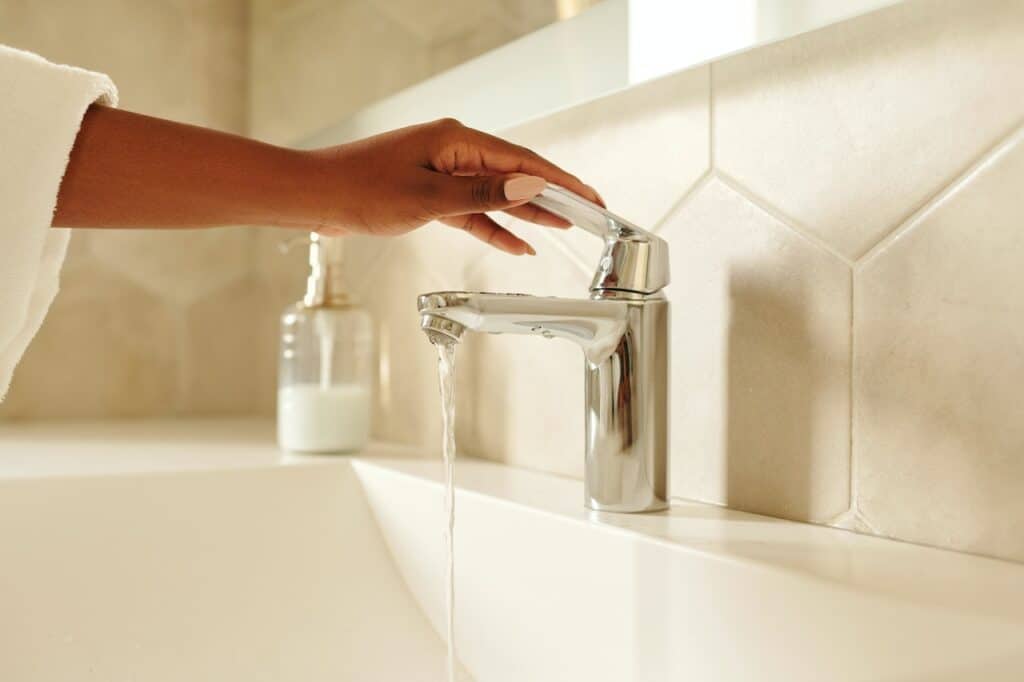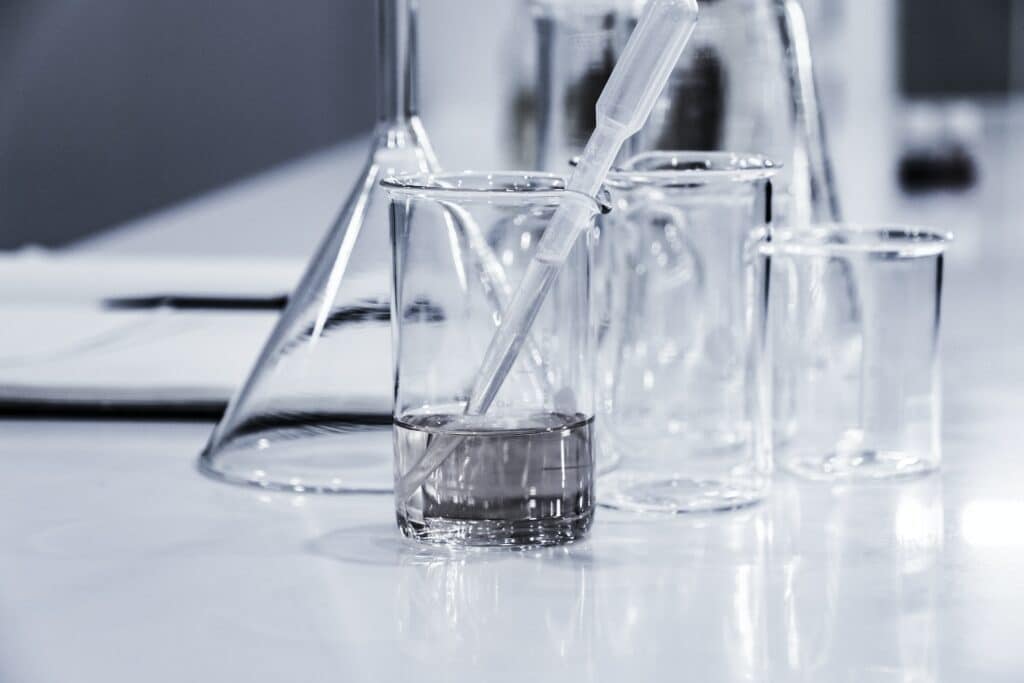Using a water testing kit to test the drinking water in your home’s water can highlight potential contaminants that could affect your health. Some test kits use a test strip to provide rapid test results, but these may not identify as many common contaminants as water tests that require sending a water sample to laboratories.
1. Know the Water Source
Determining whether your water source is from a municipal water system or private well is crucial, as responsibilities for water quality testing and water safety differ based on the source.
Individual states and the Environmental Protection Agency (EPA) monitor the city water or municipal water supplies that cater to the vast majority of Americans’ drinking water needs. Meanwhile, the EPA estimates that private wells provide drinking water to more than 23 million U.S. households.
Municipal water systems are mandated to comply with the EPA’s minimum legal limits for more than 90 common contaminants. In contrast, private wells owners are entirely accountable for their water supply’s safety, and are urged to perform a water test annually.
Since most Americans get their drinking water from their local municipality, they typically receive an annual Consumer Confidence Report (CCR) detailing the water quality. Community water systems must adhere to EPA water quality standards. Those concerned about potential contaminant presence in their home’s water can either request testing reports from their water supplier, or use water testing kits to collect water samples for testing. You can also send samples to laboratories.
Given the differing regulations, people using water from private wells might consider opting for comprehensive water testing kits. Some laboratories even provide technicians to collect the water samples. The EPA suggests asking about this service, as it may result in more reliable samples and accurate test results.
2. Test the Water Quality
Testing the drinking water in your home using a water testing kit can identify potential contaminants that might jeopardize your family’s health. There are numerous test kits on that market that can help you test your home’s water.
Some water tests may have limitations in detecting certain contaminants. On the other hand, some water testing kits necessitate sending a water sample to laboratories for a comprehensive water quality testing.
Following these directions can help you evaluate the water quality in your home. Regardless of the water test kit you choose, always follow the provided instructions to obtain accurate test results.

3. Test for Specific Contaminants
How do you determine which biological contaminants or chemicals to check for in your water supply? Your water supplier’s Consumer Confidence Report and the EPA’s resources can offer insight into potential contaminants recently detected in your drinking water.
The odor and color of your water can also give hints about the presence of certain contaminants. For example, lead contamination is not uncommon, and most notably caused significant health problems during events like the Flint water crisis. The distinct metallic taste of the water was an early indicator for Flint residents that their tap water had high concentrations of lead.
Widespread contaminant exposure is not unheard of. When such incidents arise, it’s crucial to recognize the specific common contaminants, heavy metals, and other compounds at play. Being aware of accidents or spills can help in deciding the appropriate water tests.
For instance, a hazardous chemical spill due to the 2023 train accident in Ohio affected many private wells. This incident resulted in the release of more than a million gallons of toxic chemicals into local water systems and groundwater.
4. Pick the Best Test Method for Your Home
Picking a water testing kit can be daunting, especially considering the different range of pollutants each test can detect.
Some test kits offer rapid test results, while others require sending a water sample to a certified lab for a more comprehensive water quality testing. Laboratories often produce more precise test results. Your finances and the desired accuracy of test results will guide you in choosing the right option.
Test Strips: Often the most cost-friendly choice, test strips deliver swift test results. Depending on the brand, some might only test for a single common contaminant, while others can test for dozens of different contaminants.
Color Disk Powder Kits: These testing kits instruct users to mix a few drops of their water sample with a powder reagent in a small container. They are similar to test strips, but typically come at a higher price point.
Laboratory Testing: This might be the priciest option, but securing a water testing kit from an EPA-certified or state-certified laboratory is the most accurate testing method. Some labs can detect hundreds of different contaminants in a single water sample.
Your concerns about your municipal water or drinking water will dictate which water testing kit is best for your home. It’s worth noting that many of these test kits are designed for single use.

5. Follow Test Kit Directions
It’s important to review the directions that come with your water testing kit before starting the test to ensure the most accurate test results. Thoroughly clean your hands prior to starting the water test, and have a timer on hand to track the test results.
6. Compare Results to State and EPA Guidelines
The Environmental Protection Agency established the National Primary Drinking Water Regulations, which set the legal water standards for the United States. These regulations define acceptable levels for more than 90 common contaminants. Municipal water systems must ensure that their drinking water adheres to these standards. They can also be a reference for private wells owners.
If tap water displays concentrations of lead surpassing 15 parts per billion in more than 10% of the consumer taps tested, the city water system must promptly act to mitigate the further corrosion of lead pipes. Similarly, if a private well owner detects high lead levels in their water supply, they need to respond quickly.
The Safe Drinking Water Act empowers states to formulate their own water quality standards. Oftentimes, state-level regulations are more stringent than those set by the EPA, utilizing the National Primary Drinking Water Regulations as a foundational baseline for setting their guidelines.
Frequently Asked Questions About Water Quality
Given the serious health implications of certain water contaminants, knowing how to test the water in your home and getting precise test results is crucial.
The following frequently asked questions touch upon several important aspects related to water quality testing.
How Often Should Water Quality Be Tested?
The Centers for Disease Control and Prevention recommends that private wells undergo water testing annually for dissolved solids, e coli (a type of coliform bacteria), nitrate, and pH levels. Water wells should also be tested if there have been alterations or issues with the well or adjacent land.
Municipal water systems regularly test their water supply, adhering to guidelines set by the Safe Drinking Water Act. For those receiving water from a public utility or city water, at-home water quality testing is an optional measure.
If you notice variations in your water’s color, odor, or taste, it’s advisable to perform a water test. Monitor for alerts from your water provider about potential contaminant issues in your region.
What Symptoms Will I Have if I am Exposed to Contaminated Water?
Military personnel stationed at Camp Lejeune in North Carolina between 1953 and 1987 were exposed to contaminated drinking water. Of the roughly one million people exposed during this period, a significant number faced severe health conditions, including cancers, neurological disorders, and reproductive challenges.
Physical indications of water quality issues can offer clues about potential contaminants in your water supply. The following chart outlines some of the most common contaminants and the symptoms signaling their presence.
| Water Problem | Potential Contaminant | Health Problems |
|---|---|---|
| Metallic taste | Iron, copper, zinc | Not typically harmful; long-term copper exposure can cause stomach cramps and liver damage |
| Rotten egg smell | Hydrogen sulfide | Not typically harmful but can be indicative of other issues; high concentrations can be toxic |
| Chlorine smell | Chlorine | Eye and nose irritation, stomach discomfort |
| Musty, earthy odor | Algae blooms | Stomach and liver problems, neurological effects |
| Turbidity or cloudiness | Sediment, microbes | Potential gastrointestinal illness if microbes are present |
| Blue or green staining | Copper | Stomach cramps, nausea, long-term liver damage |
| Salty taste | Chloride, sodium | High blood pressure concerns (for those on sodium-restricted diets) |
| Oily sheen or rainbow color | Petroleum products | Skin irritation, potential long-term health impacts |
| Bitter or chemical taste | High TDS (Total Dissolved Solids), industrial chemicals | Varies depending on the specific contaminant; can range from gastrointestinal distress to organ damage |
| Sweet taste | Glycols, lead | Kidney damage, neurological effects from lead |
| Red, brown, or orange discoloration | Iron, rust | Not typically harmful; aesthetic concerns |
| Foamy appearance | Detergents, surfactants | Potential gastrointestinal or respiratory problems |
Please note that the health effects can vary based on the concentration and duration of exposure, as well as the individual’s health condition and other factors. Some contaminants might have other health impacts not listed in this table, and the presence of a contaminant doesn’t always mean it’s at a harmful level. Always refer to relevant local guidelines or professional advice when concerned about water quality.
Are Home Testing Kits Accurate?
The accuracy of water testing kits for homes can vary based on the manufacturer. While some test kits have specifically received recognition from EPA-certified laboratories, most kits on the market meet the EPA’s water quality testing standards. Generally speaking, sending water samples to laboratories provides the most reliable and comprehensive test results.
What Should You Do If Your Water is Contaminated?
If your water test results indicate potential contaminants in your drinking water, boiling can address microbial issues, and water filtration can tackle other contaminants. There’s a wide range of water filtration options for the home, so checking the water treatment capability of each filter is important.
It’s also recommended that you keep a supply of bottled water in case of emergency. If your water does test positive for contaminants, it’s important to alert your local health department. They can monitor the situation closely, and help the community work towards cleaning up its water supply.
References
- https://mywaterquality.ca.gov/safe_to_drink/water_quality_testing/
- https://www.businessinsider.com/signs-tap-water-contaminated-unsafe-2019-5
- https://www.cdc.gov/healthywater/drinking/drinking-water-faq.html
- https://www.epa.gov/dwreginfo/drinking-water-regulations
- https://www.epa.gov/dwreginfo/information-about-public-water-systems
- https://www.epa.gov/ground-water-and-drinking-water/basic-information-about-lead-drinking-water
- https://www.epa.gov/privatewells
- https://waterdefense.org/water/well/well-water-vs-city-water-pros-cons-comparison/
